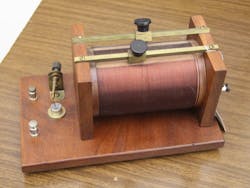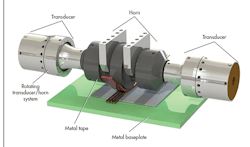In 2015, Electronic Design and Machine Design partnered in a contest about which “STEM Starter” was the most influential toy for our audiences growing up. Legos won and the crystal radio came in second. While Legos are still popular and the company has expanded its arsenal of STEM kits, the crystal radio might be influencing a new trend that continues to develop: energy harvesting.
Crystal radios were the first widely used energy harvesters, but today energy harvesting is resurfacing in a new way. The Internet of Things (IoT) has decentralized computing and expanded the edges from which data is coming. Data generated from sensors often needs energy. Sensors are shrinking and using less energy, but hardwired energy may be expensive. Batteries have been used to solve remote power problems, though batteries still need to be replaced and some IoT applications might be hard to get to, due to being remote or because they are inside a machine.
As a result, increasing battery life is becoming more important. Although electronics are getting smaller and using less power, other mechanisms and hardware might not be able to follow suit.
1. Piezoelectronics
Undeterred by this prospect, designers are using the piezoelectric effect to continue shrinking products. A piezoelectric material causes deformation through an electric charge. This can be a simple operation to open and close a valve. The benefit to this technology is that it acts like a capacitor. Once the material is charged, it will hold the charge until grounded. Instead of closing the valve by grounding out the charge in the material, the energy can discharge into a capacitor or energy recovery device. This technique recovers up to 50% of the energy needed to open the valve. By recovering the energy, some applications save up to 95% in power. In one example, a solenoid was replaced with a piezoelectric device, extending the battery life by 24 times.
The IoT could use piezoelectronics to power electronics. For remote and longer-term sensing and data applications, a battery can lose power and eventually needs to be replaced. A piezoelectric generator, on the other hand, could be without a charge for an extended period. As soon as an outside force acts on it, however, the generator is able to start producing power again. As long as the electronics are still functioning, you can start collecting data again—even if years have passed.
In “Making Piezoelectronics Work For You,” Maurizio Porfiri, a professor at New York University, notes that power-harvesting piezoelectrics could provide a sustainable power source to operate sensors. He also states that engineers and scientists are aggressively researching materials science to engineer efficient and performing devices. The result could be flexible fabrics that control a material’s deformation or let the deformation generate electricity. With the growth of the mobility and IoT markets, piezoelectric technology could have some interesting future applications.
2. Indoor Solar Films
As electronics reduce consumption but the need for remote power increases, harvesting is solving many problems. One application for Industrial IoT is solar films, for example. As mentioned in “The Difference Between Solar Panels,” crystal silicon generates power best under direct sunlight in the ultraviolet spectrum. For indoor applications, this technology obviously may not be the best solution. Yet amorphous silicon films do work well in the visible light spectrum used in indoor lighting. This might make solar technology a handy solution for remote IoT power.
3. Data Transmission
As we see power harvesting become more popular in years to come, electronics will continue the trend of reducing power consumption. While sensors and other MEMS devices are already in the milli- and microwatt range, sending data can still take a lot of energy. However, a new technology that could hit the market as soon as three years from now might change this. HitchHike from Stanford University transmits data using microwatts—almost zero, says Pengyu Zhang, a post-doctoral researcher at Stanford. As a result, a small battery could power hitchHike for a decade or more. “HitchHike could lead to widespread adoption in the Internet of Things,” says lead researcher Sachin Katti. “Sensors could be deployed anywhere we can put a coin battery that has existing WiFi. The technology could potentially even operate without batteries. That would be a big development in this field.”
HitchHike has a range of 50 meters and transmits up to 300 kilobits of data per second. According to the team, “The system was named HitchHike for its clever design that hitchhikes on incoming radio waves from a smartphone or a laptop. It translates those incoming signals to its own message and retransmits its own data on a different WiFi channel.”
This type of technology will continue to drive energy consumption down, which will increase the benefit of energy harvesting. In 2015, the energy harvesting system market was $268.6 million and is expected to grow to $974.4 million by 2022 according to MarketsandMarkets.com. This includes alternative energy like wind, solar, geothermal, and tidal (see “For an Energy Source, Look to the Sea”). From large global powers, such as wind, to tiny vibrations or heat, harvesting energy will be an important part of our future. For more information on energy harvesting check out “7 Signs That Now Is the Time for Energy Harvesting.”





